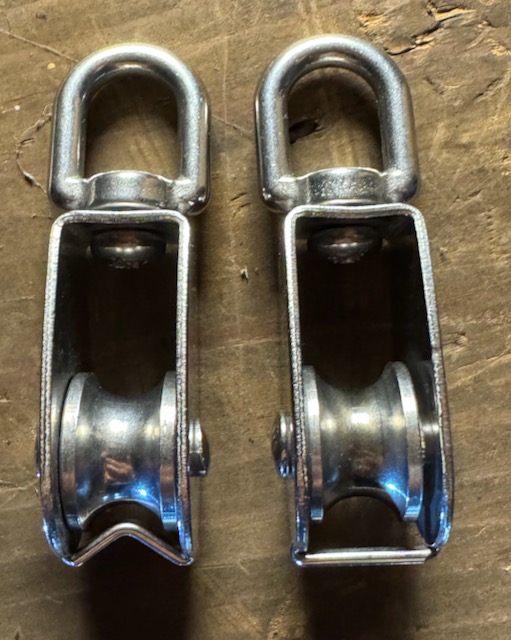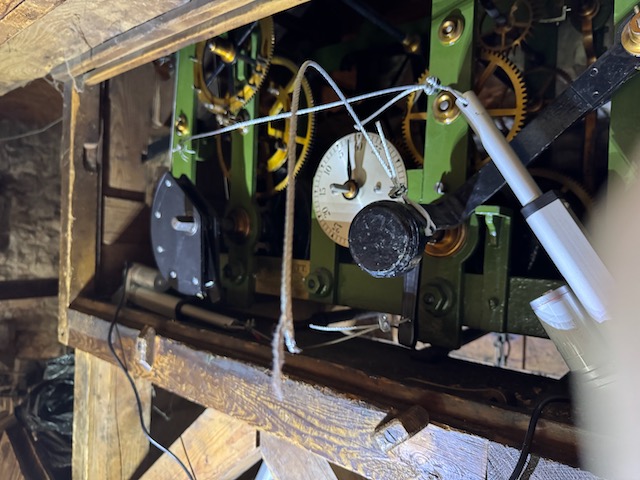The galvanised steel wire rope on one of my clock winders has snapped. This is a 3mm rope, so it would have a rating of greater than 500 kg. I am quite surprised that it snapped, as the load on this wire rope is much lower than that of others in use in the same system.
I suspect that the failure is due to the pulley. There is a significant gap between the frame and the pulley wheel where the wire may get jammed. (Right-hand picture). My initial thought was to 3d print a spacer washer, but instead, I was able to squash the entire assembly, removing all the play while still allowing the pulley to rotate. (Left-hand picture).

When the clock is being wound, either by hand or via the clock winder, the tension is removed from the drive wheel, resulting in a reduced impulse on the escapement. In early versions of the winder, I had ignored the counterweight by tying it out of the way, but this caused the clock to lose almost 10 minutes per day. The counterweight is an ingeniously simple workaround which keeps tension on the drive wheel by pulling on one of the gear teeth. This particular part of the clock winder lifts the counterweight before the winder lifts the weight.
